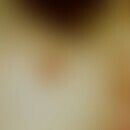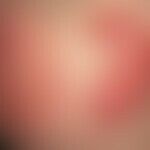Synonym(s)
HistoryThis section has been translated automatically.
Keining 1941; Burckhardt 1942
DefinitionThis section has been translated automatically.
A disease that occurs mainly in children and adolescents and is clinically impressive like pernio (spring pernio), which is a light dermatosis.
You might also be interested in
EtiopathogenesisThis section has been translated automatically.
Unclear; some authors see the disease as variant of a polymorphic light dermatosis. As cold influences, sudden temperature and air pressure changes apparently also play a triggering role (analogous to frostbite), a frostbitten mechanism cannot be excluded. It remains to be seen to what extent parvovirus B19 infections are pathogenetically significant (Kreuter A et al. 2018).
LocalizationThis section has been translated automatically.
Clinical featuresThis section has been translated automatically.
Itchy, painless succulent, bright red or reddish-livid erythema and swelling, papules and plques, more rarely papulovesiculosis and bullous skin changes.
Differential diagnosisThis section has been translated automatically.
Erythema exsudativum multiforme: Shooting target formations
Hidroa vacciniformia: circumscribed erythema with the formation of partially umbilical blisters up to 2.0 cm in size with serous or haemorrhagic content
Frostbite, degree II: Evidentiary anamnesis
Lichturtikaria: experimentally easily provoked
Erythropoietic protoporphyria: Infestation of the face, here mainly nose, back of the hand
TherapyThis section has been translated automatically.
LiteratureThis section has been translated automatically.
- Abeck D et al (1991) Spring perniosis case observation and literature review. Z Hautkr 67: 49-51
- Jansen T, Plewig G (1999) Polymorphic photodermatitis. 2: Spring perniosis, therapy and prevention. MMW Progression Med 141: 46-48
- Keining E, Oldach FA (1941) Treatment results with nicotinamide in multiform erythema. Dermatol weekly 112: 285-293
Kreuter A et al (2018) Juvenile Spring Eruption Associated With Parvovirus B19 Infection. JAMA Dermatol 154:1356-1357.
Lava SA et al (22013) Juvenile spring eruption: an outbreak report and systematic review of the literature. Br J Dermatol 168:1066-1072.
Nabatian AS et al (2015) Juvenile Spring Eruption: AVariant of Perniosis? At J Dermatopathol 37:721-723.
- Nakamura T et al (1986) Juvenile spring eruption. Dermatologist 37: 46-47
- Stratigos AJ et al (2003) Spectrum of idiopathic photodermatoses in a Mediterranean country. Int J Dermatol 42: 449-454
Incoming links (11)
Autumn perniosis; Erythema infectiosum; Hidroa vernalis; Hydrophilic hydrocortisone acetate cream 0.25/0.5 or 1% (nrf 11.15.); Juvenil spring eruptions of the ears; Mud disease; Perniones; Perniones; Perniosis, spring perniosis; Spring eruption, juvenile; ... Show allOutgoing links (13)
Erythema multiforme; Frostbite; Glucorticosteroids topical; Hydroa vacciniforme; Hydrophilic hydrocortisone acetate cream 0.25/0.5 or 1% (nrf 11.15.); Light dermatoses (overview); Light stabilizers; Light urticaria; Papel; Parvovirus b19 infection; ... Show allDisclaimer
Please ask your physician for a reliable diagnosis. This website is only meant as a reference.






